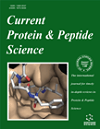-
s New Extremophilic Lipases and Esterases from Metagenomics
- Source: Current Protein and Peptide Science, Volume 15, Issue 5, Aug 2014, p. 445 - 455
-
- 01 Aug 2014
Abstract
Lipolytic enzymes catalyze the hydrolysis of ester bonds in the presence of water. In media with low water content or in organic solvents, they can catalyze synthetic reactions such as esterification and transesterification. Lipases and esterases, in particular those from extremophilic origin, are robust enzymes, functional under the harsh conditions of industrial processes owing to their inherent thermostability and resistance towards organic solvents, which combined with their high chemo-, regio- and enantioselectivity make them very attractive biocatalysts for a variety of industrial applications. Likewise, enzymes from extremophile sources can provide additional features such as activity at extreme temperatures, extreme pH values or high salinity levels, which could be interesting for certain purposes. New lipases and esterases have traditionally been discovered by the isolation of microbial strains producing lipolytic activity. The Genome Projects Era allowed genome mining, exploiting homology with known lipases and esterases, to be used in the search for new enzymes. The Metagenomic Era meant a step forward in this field with the study of the metagenome, the pool of genomes in an environmental microbial community. Current molecular biology techniques make it possible to construct total environmental DNA libraries, including the genomes of unculturable organisms, opening a new window to a vast field of unknown enzymes with new and unique properties. Here, we review the latest advances and findings from research into new extremophilic lipases and esterases, using metagenomic approaches, and their potential industrial and biotechnological applications.


